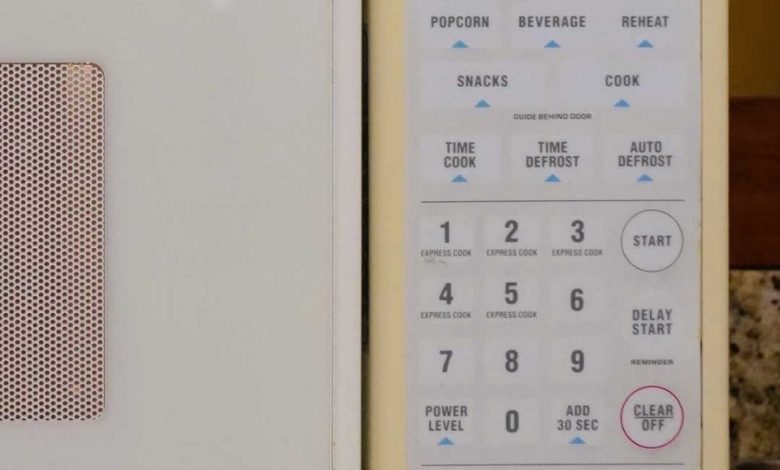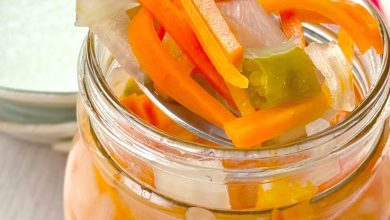If you’re not using this microwave button, you’re missing out. Start today! I’m 60, and I just learned about it

“If you’re not using this microwave button, you’re missing out. Start today! I’m 60, and I just learned about it” – this statement, initially met with a degree of disbelief, has become a personal revelation for me. For years, I, like many others, had considered the microwave a somewhat one-dimensional appliance, relying solely on the “high power” setting for all my cooking needs. However, lurking within the control panel of this ubiquitous kitchen gadget lies a hidden gem: the power level button.
Unveiling the Power Level Button: A Culinary Game Changer
The power level button, often overlooked or dismissed as unnecessary complexity, is the key to unlocking the true potential of your microwave. Instead of subjecting your food to a relentless barrage of high-intensity microwaves, this feature allows you to fine-tune the cooking process with remarkable precision. Imagine a dimmer switch for your microwave – that’s essentially what the power level button offers. By adjusting the power level, you can exert greater control over the cooking process, ensuring more even heating, preventing overcooking, and preserving the delicate flavors and textures of your food.
The Science Behind the Scenes: How Power Levels Work
Microwaves utilize electromagnetic waves to cook food. These waves interact with water molecules within the food, causing them to vibrate rapidly and generate heat. The power level setting directly influences the intensity and duration of these waves. For instance, a setting of 50% signifies that the microwave operates at full power for half the cooking cycle and remains inactive for the other half. This on-off cycle, or pulsing, allows for more even heat distribution throughout the food, which is particularly crucial for delicate items or foods that require gradual and controlled heating.
A Culinary Guide: Power Levels for Every Occasion
The ideal power level varies significantly depending on the specific food and the desired outcome.
- Reheating Leftovers: Lower power levels (around 3 or 4) are generally recommended for reheating leftovers. This gentler approach helps to prevent drying out and ensures the food is heated evenly from the inside out, preserving its moisture and original texture.
- Defrosting: A power level of 3 is often ideal for defrosting frozen foods. This lower setting minimizes the risk of localized hot spots and ensures the food thaws evenly and gently, preventing any undesirable changes in texture or flavor.
- Cooking Delicate Foods: For delicate items such as fish, custards, or soufflés, a medium power level is crucial. This approach prevents overcooking, which can lead to toughened textures and a loss of flavor.
- Cooking Dense Foods: When cooking dense vegetables, large cuts of meat, or other foods that require deeper heat penetration, higher power levels may be necessary to ensure thorough cooking while minimizing overall cooking time.
Navigating Common Pitfalls: Mastering the Art of Power Level Selection
A common misconception is that higher power levels always translate to faster cooking times. However, this is not always the case. Using a high power level with delicate foods can lead to uneven cooking, overcooking, and a significant loss of quality. Conversely, relying solely on low power levels for dense foods can significantly extend cooking times and may not ensure thorough cooking.
To avoid these pitfalls, it’s essential to experiment with different power levels for various foods and adjust cooking times accordingly. Always prioritize food safety and quality over speed. Remember to stir or rotate food halfway through cooking, especially when using lower power levels, to ensure even heat distribution.
A Personal Revelation: Discovering Power Levels at 60
“If you’re not using this microwave button, you’re missing out. Start today! I’m 60, and I just learned about it” – this statement, while initially met with a degree of skepticism, has become a personal mantra. At 60, I believed I had a firm grasp on microwave cooking. However, the discovery of the power level button opened my eyes to a world of previously untapped possibilities. By experimenting with different power level settings, I’ve witnessed a dramatic improvement in the quality of my microwave-cooked meals. Leftovers are no longer dry and flavorless; delicate dishes are cooked to perfection; and even the most challenging foods are now within my control.
Unlocking the Full Potential of Your Microwave
The power level button is a simple yet profound feature that can revolutionize your microwave cooking experience. By embracing this tool, you can unlock a world of culinary possibilities, from perfectly reheated leftovers to expertly cooked gourmet meals. So, ditch the “high power” habit and embark on a journey of culinary discovery. You might be surprised at what you can achieve with a little adjustment of the power level.
Disclaimer: This article is for informational purposes only. Always refer to your microwave’s user manual for specific instructions and safety guidelines.




